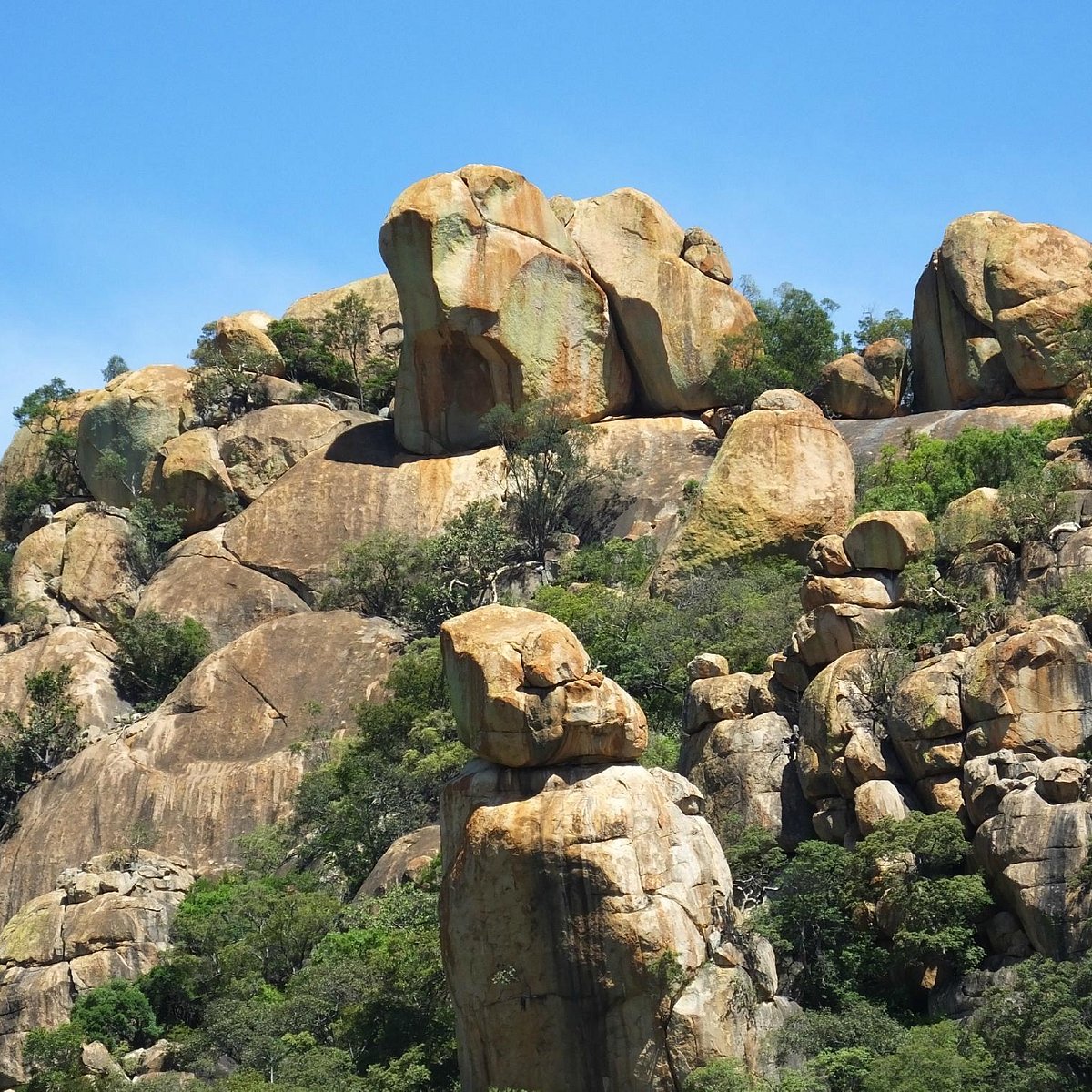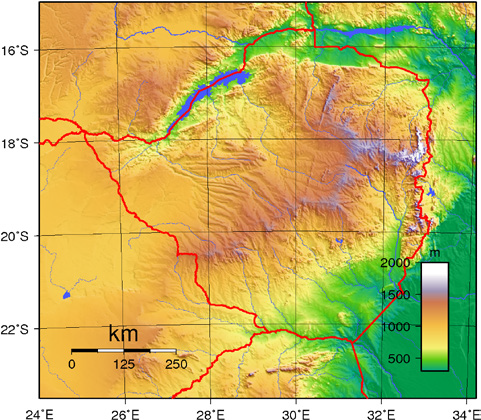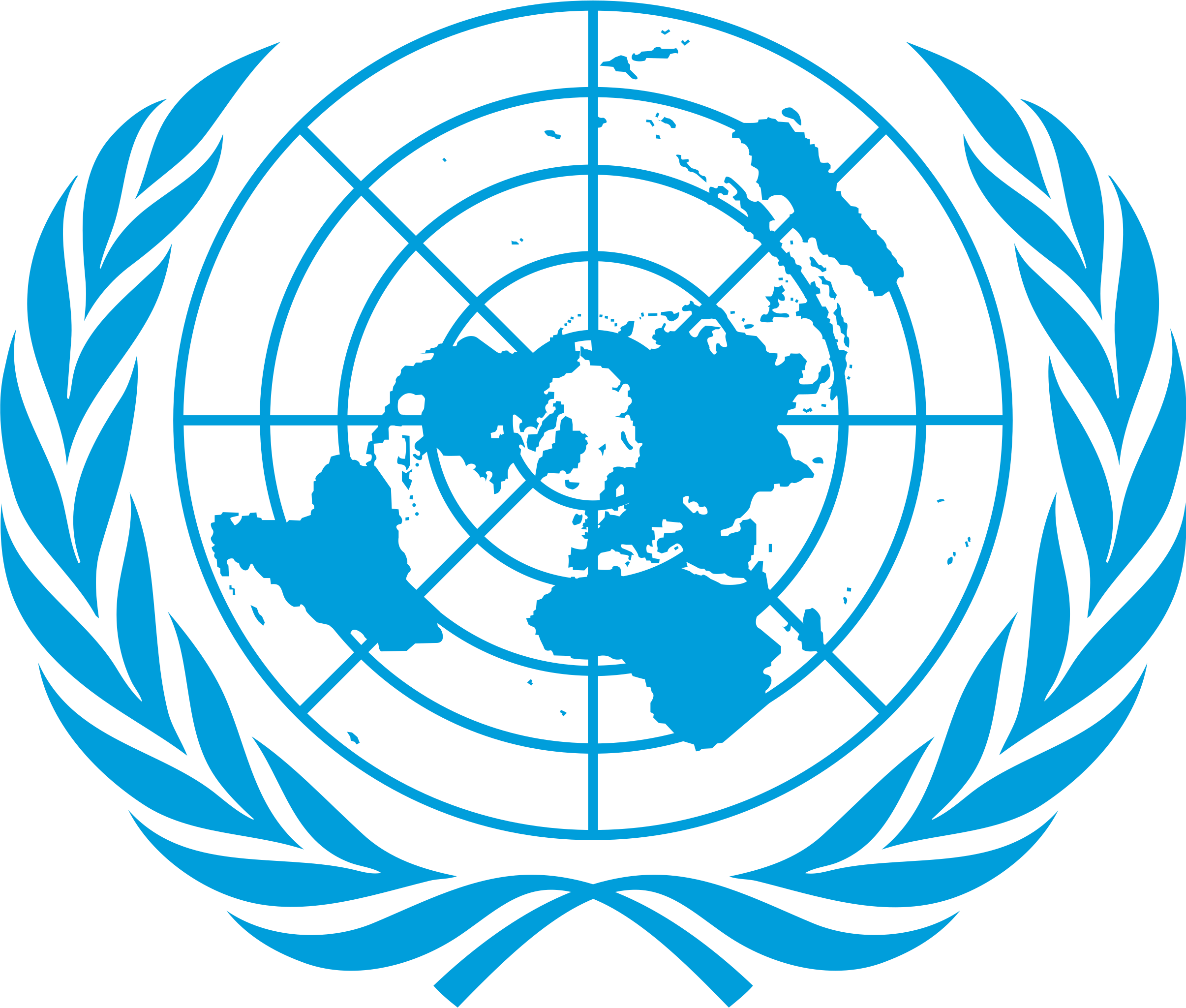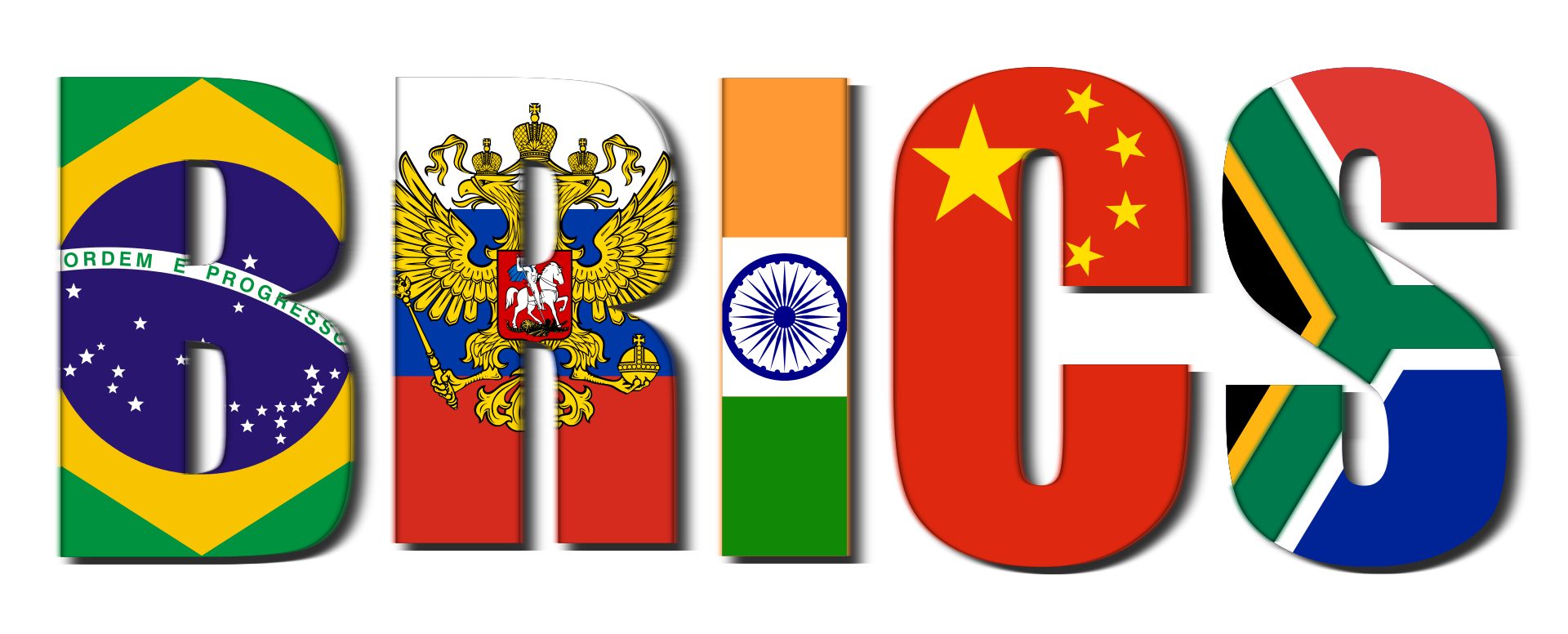Republic of Zimbabwe
Introduction
The name Zimbabwe is derived from Shona “Dzimba Dzemabwe”, meaning “Houses of Stone” or stone buildings, today symbolized by the Great Zimbabwe near the present day town of Masvingo. Zimbabwe has a rich history, not only of achievement, innovation, co-operation and economic prosperity, but also of conflict, trials and tribulations that reflects the dynamism of its peoples. Many scholars, past and present, have enhanced our knowledge of the Zimbabwean past through their works. Particularly important in our understanding of the pre-colonial past have been the works of archaeologists, linguists, historians, oral traditions and records of 16th century Portuguese traders that interacted with central and southern Africa during that time.

The Land
Zimbabwe is situated in south central Africa between the Limpopo and Zambezi rivers, covering an area of slightly above 390,000 square kilometres. Bounded by Zambia to the north and north-west, South Africa to the south, Mozambique to the east and north-east and Botswana to the south-west, Zimbabwe lies wholly to the north of the Tropic of Capricorn. It is part of the plateau, which is a major feature of the geography of southern Africa.

Physical Features
Almost the whole of Zimbabwe lies more than 300m above sea level. Physically, the country is divided by a high central plateau, known as the Highveld, which is about 650 km long by 80 km wide and at least 1,200m above sea level. Most of this predominantly fertile plateau consists of mopane and msasa savannah woodlands. Deep river valleys have split the Middleveld areas into great blocks of fine plateau country. The Lowveld below 600m comprises a narrow strip in the Zambezi Valley and border tract between the Limpopo and Save rivers. The lowest point in the country is the confluence of the Save and Runde rivers, which is about 162m above the sea level. Massive granite outcrops occur in various parts of Zimbabwe, and along the eastern border is a mountainous region stretching for some 350 km. Towards the north of this region, the country’s highest mountain, Inyangani, stands 2,592 m above sea level and comprises the Vumba and the Chimanimani Mountains at its southern end. The underlying granite, exposed by millions of years of erosion, is seen in its most dramatic form in the Matobo hills, south of Bulawayo.
Climate
Nature has given Zimbabwe one of the finest climates in the world, which is warm without being oppressive and with a daily average sunshine ranging from four to ten hours all year round. Generally the days are bright and sunny, the nights clear and cool. November to April are the summer months (rainy season) while winter is from May to July and is generally dry. The period August to October is very hot and dry. Both temperature and rainfall are directly influenced by altitude.
The Highveld and the Eastern Highlands have lower temperatures than the Lowveld and the Zambezi basin both in summer and winter. In the latter, summer temperatures can soar to above 35°C compared with Highveld’s average of 25°C to 35°C. Daytime winter temperatures average 13°C to 20°C but can fall to -5°C at night.

The People
Zimbabweans have a well deserved reputation for their friendliness and visitors to the country are assured of a warm and sincere welcome.
Zimbabwe’s population stands at approximately 13 million with an annual growth rate of 3.5%. By far the biggest percentage of the people belongs to the Shona groups who inhabit the north and east, followed by the Ndebele who mainly live in the south-west of the country. Other minority groups include the Batonga, the Venda and Kalanga who live along the south-western borders.
Zimbabwe has sixteen (16) official languages, with English being one of them. Of the two main Bantu-speaking groups; 60% speak Shona and 40% Ndebele.

Land Reform Programme – Resettlement
At independence, Zimbabwe inherited a racially skewed agricultural land ownership pattern where the white large-scale commercial farmers, consisting of less than 1% of the population occupied 45% of agricultural land. 75% of this is in the high rainfall areas of Zimbabwe, where the potential for agricultural production is high. Equally significantly, 60% of this large-scale commercial land was not merely under-utilised but wholly unutilised.
Agrarian reform in Zimbabwe therefore revolved around land reform where the systematic dispossession and alienation of the land, from the black indigenous people during the period of colonial rule, were adequately addressed. The Zimbabwean Agrarian Reform involved restructuring of access to land, and an overall transformation of the existing farming system, institutions and structures.

The Economy
The Zimbabwean economy is agriculturally-based, but a strong manufacturing, mining, tourism, and services sector also exist. The main sectors of the economy are manufacturing, agriculture, mining, tourism, transport, Information Communication Technology (ICT), banking and finance, and insurance. The country has a relatively sophisticated and advanced financial system and a vibrant Stock Exchange. The performance of the economy in recent years has been on a downward trend, mostly due to sanctions imposed by the West, particularly the European Union, the USA, Canada, Australia and New Zealand. Since November 2014 The EU restored financial assistance which had been suspended in 2002. However, this is not direct budget support.
The country’s principal export commodities include tobacco, gold, diamonds, ferro-alloys, asbestos, sugar, iron and steel, nickel, cotton, textiles and coffee. The chief imports are iron and steel plates and sheets, power machinery and switch gear, telecommunications equipment, construction and industrial machinery and vehicle kits, as well as spare parts. Zimbabwe’s main trading partners are South Africa, China, Brazil, Botswana, Mozambique, Zambia, U.K., Germany, the U.S.A., the Netherlands, Japan and Italy.

Our Partners
Our Partners in making the world a better place.





